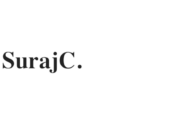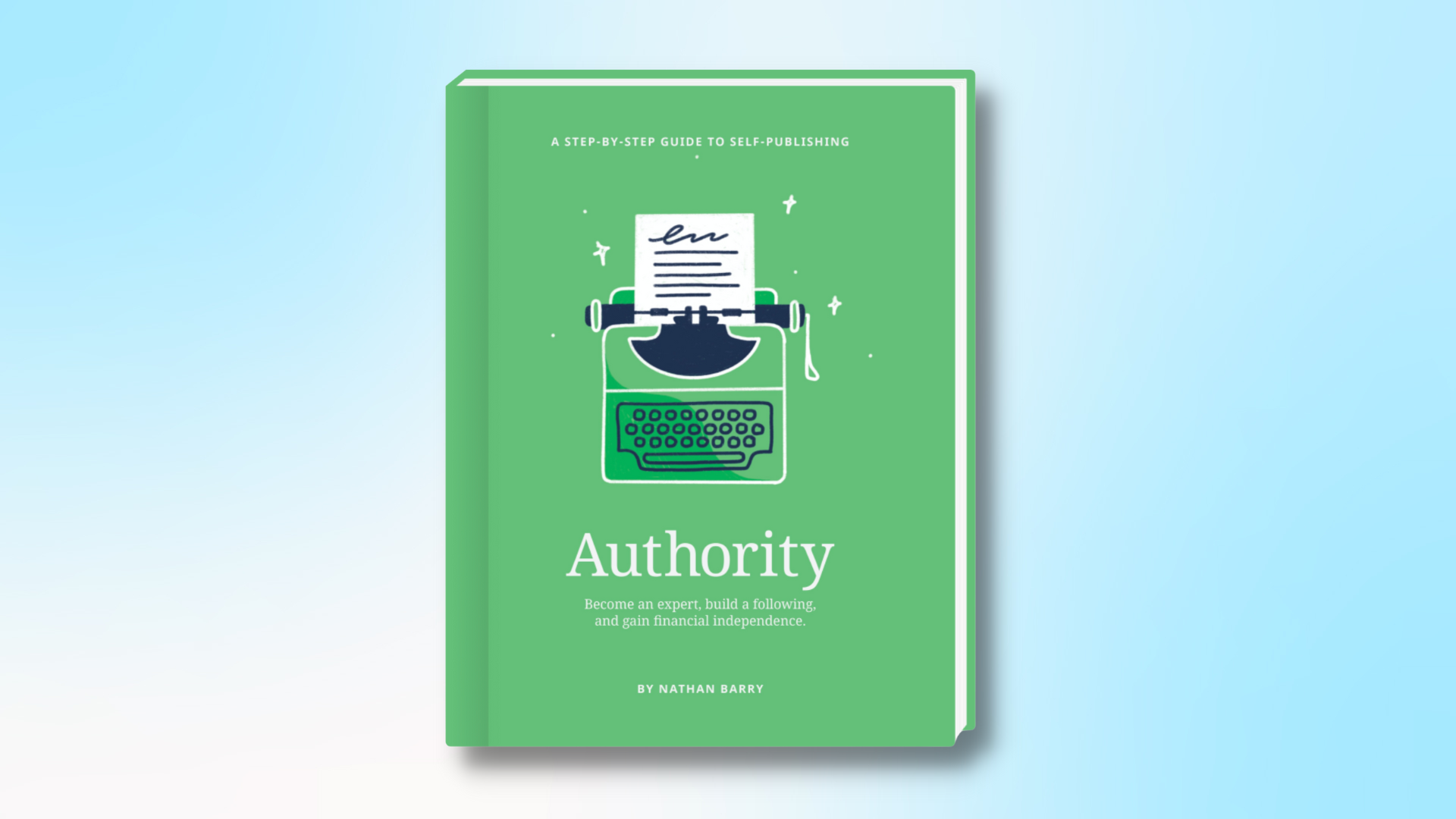🚀 The Book in 3 Sentences
- Write, don’t aim for perfection in the first draft.
- Focus on writing individual sections, don’t waste time in creating the perfect plan for the book.
- Provide more value through your book than you charge.
🎨 Impressions
Initially, it felt like this would be just another general book but it soon went into important details.
Who Should Read It?
Anyone who wants to build a sustainable side hustle by writing or wants to become an author should read it.
☘️ How the Book Changed Me
How my life/behavior/thoughts/ideas have changed as a result of reading the book.
- I started taking notes on the books that I was reading and started sharing them on my website.
- Writing ~1000 words every day without aiming for perfection.
✍️ My Top 3 Quotes
- “You can continue to create cutting-edge work and strive to be the best in your industry, but until you start teaching and sharing, your reach and influence will be limited.”
- “It’s far better to write something than it is to write nothing while trying to achieve perfection.”
- “When faced with writer’s block, lower your standards and keep going.”
📒 Summary + Notes
Chapter 1 – On Writing
Why write?
The book starts with an example of Marco Polo.
Marco Polo was a Venetian explorer who became famous for being the first person to explore the Silk Road to China. But the fact is he didn’t. He wasn’t even an explorer, he was only a merchant.
In fact, his father and uncle had walked the Silk Road well before Marco was born. So why is he the one who is remembered?
Simply because he wrote about it.
You can continue to create cutting-edge work and strive to be the best in your industry, but until you start teaching and sharing, your reach and influence will be limited.
Writing a book also gives you authority in your niche. Once you write a book, you can call yourself the author of ____ and so can others. You will no longer be a ___ guy.
An accidental expert
Pat Flynn accidentally became an accidental expert.
When he was studying for his LEED exams as an architect, he put all the notes that he took on a website he created. His goal was to be able to organize his notes and access them from any computer that he wanted.
He took the exam, passed, and moved on with his life.
Then almost a year later, when he was laid off from his architecture firm because of the economic downturn, he started looking at other options. He remembered all the emails he had received recently about his study notes.
So he put a Google Analytics tracking code on his site to check if there was some opportunity there. He checked the results the next day and he was amazed, the results were incredible: four or five thousand people were coming to his site every day. That is ~150,000 page views every month.
People were finding his notes organically via Google search.
So after some research, trial, and error, he compiled all his notes, packaged them as a study guide PDF, and started offering them on his website as a paid product.
In the first month, October 2008, he made $7905.88.
It was more than his salaried job.
“The difference between Pat Flynn and the thousands of other people who have taken the LEED exam is that Pat made his study notes public.”
What to write about?
Ask yourself: “What do my friends and family ask me for help with?”
Is it in improving their relationships? Study tips? Running a business? Removing viruses from their computers? Setting up their websites? Deciding on which phone or computer to purchase?
If people are asking you for help in a particular area, chances are they think you know something about it.
That also means there is a demand for that knowledge.
You don’t have to be an expert to teach
As discussed in the book Show Your Work by Austin Kleon, you don’t need to be an expert to teach. Simply teach whatever it is that you’re learning.
Whatever level you’re at, there’s a good chance that there are people who know less about you. And as someone who is just learning, you will be able to explain things much better than an expert.
An expert forgets the feeling of being a beginner and the struggles of one, a beginner doesn’t. So keep sharing what you learn.
Competition is good
You should not hesitate when you realize that there’s competition for the market you’re trying to tap into.
If there aren’t any competitors in your field, you should ask yourself why.
Competition is proof that your business idea is good. People are willing to pay for products and services in that niche.
Be consistent
Almost 80% of the population thinks about starting a business or writing a book. Having a book idea and simply starting doesn’t mean you will succeed.
What matters more is your consistency.
As discussed in my article “The last man standing”, 90% of the people who start businesses give up within the first two months.
If you are consistent and sustained beyond the first 2 months, you will already be more likely to succeed than the people who gave up sooner.
In writing, one effective way to stay consistent would be to use the “Don’t break the chain” method.

Once you begin writing, put a cross on your physical calendar or use a habit-tracking app. In the beginning, you will have to get yourself to do the thing.
But after some time, your calendar with a chain that you created of consistency, and you will be motivated to not break the chain. Just like the Snapchat streak.
After starting my journaling habit in 2024, I only continued because I had kept doing it for several months and didn’t want to break the chain.
Set a realistic daily goal and do it every day.
Writer’s Block
Do not write, erase, write again, erase, and repeat.
“When faced with writer’s block, lower your standards and keep going.”
Sandra Tsing Loh
As mentioned in the book “The Artists’ Way”, you should write 2-3 pages every day with the acceptance that those pages will be shitty and it’s alright.
It’s far better to write something than it is to write nothing while trying to achieve perfection.
Waiting to be picked
You should consider self-publishing.
You should not wait for someone to tell you “your work is good enough” to begin thinking about publishing.
Most aspiring writers wait for this to happen to them. It rarely happens. This doesn’t mean you can’t work with a publisher. You can but just don’t wait for their approval to get started.
Chapter 2 – Basic Marketing
Marketing that works
Most marketing strategies you see online are usable only for million-dollar businesses that can afford to advertise. Without the budget for advertisements like them, those strategies are as good as useless.
So here’s what you do: you teach.
Once you begin teaching online and build a base of people who like your work and trust you, they will be willing to give your book a try.
You can start teaching things you learn consistently on platforms such as LinkedIn, 𝕏 (formerly Twitter), or YouTube.
This is the strategy modern internet sensations such as Dan Koe and Justin Welsh use.
“Give them enough value for free and they will happily pay you for more.”
A landing page
How do you know for sure if people are interested in your book before you spend months of your life creating it?
You create a landing page for people to show interest by putting in their email.
If you already have a blog, use that. If not, use a YouTube tutorial to create a basic website by purchasing a domain.
Try avoiding book-specific domain names. The best domain is your own name. It not only helps you with SEO but also helps boost your personal brand.
Get a domain name like SurajC.com or NathanBarry.com.
Building a personal brand helps you in future products, services, or business launches as you don’t have to start from scratch.
When building a landing page, make sure to include:
- A headline to catch the visitor’s attention (and not hit the back button)
- An image and a detailed description of what your product will be
- An email opt-in form (for them to show interest and hear when the book launches)
Offer a sample chapter with the opt-in form for putting in their email.
Tell people
If you followed the advice of sharing what you learn and teaching online, you already have an audience you can leverage for book sales.
Beyond that, ask your friends and family to try a free sample chapter. Email them and at the end of your email, ask them to share it if they found it interesting.
If you can ask your influential friends to share it, that’s awesome.
Once your landing page is ready, make sure to add a link to your landing page at the end of each of the value posts that you share on your social media with an “if you liked this post, make sure to check out my book ____ by clicking here: ___”.
This can go a long way.
Three epic blog posts
If you want to add more authority to your landing page and opt-in form, add three epic blog posts about the problem you’re trying to solve through your book.
Each post should be between 1,000 and 5,000 words long. That’s a big range, yes, but it is dependent on the type of content.
You can also add some tutorials to make this even more effective. Additionally, consider writing guest posts on other people’s blogs and websites related to your niche for better reach. Write about a helpful topic and subtly insert a link to your book’s landing page.
Chapter 3 – Writing, Lots of Writing
Not to be overwhelmed but you’ll have to realize that you’ll have to do a lot of writing. It is totally doable if you write consistently each day.
The average word count for each category of writing is:
- Book: 25,000 – 30,000 words
- 7 – 10 guest posts: 1,000 words each
- At least 3 epic posts for your own site: 3,000+ words
Writing order
Don’t spend too much time planning a book outline. That would require too much research and planning.
Instead, create a basic outline with bolded headings for chapters followed by bulleted lists for sections for each of the chapters. Start writing the sections and you can easily rearrange the sections and chapters. Re-ordering is especially easy if you use an app such as Scrivener.
Another thing to keep in mind is that you don’t have to write in order of your chapters. Just skim down your list until you find an interesting topic. Then, open that file and start writing.
“This method lets me focus on writing in the areas I feel inspired, rather than not being able to move forward if I am stuck on a particular section.”
Stand
Poor posture can get you into a lot of trouble in the long term. If you want to become a writer, find a way to stand more than sit.
That is how the concept of standing meetings came about in most software companies. When we are sitting, it’s easy to get distracted by checking Twitter, approving blog comments, and checking email which can quickly ruin a work session.
There are two ways of doing this:
1. Expensive option: You can get a motorized standing desk.

2. Cheap option: Get a studying desk and put it on your table

In either case, you will have to make it a point to make standing a habit. When you’re just starting, you can try alternating between sitting on your chair and using your standing setup.
Research
Before you complete writing the first draft of your book, make sure to read as many books as you can about the topic you’re writing about.
The goal is not to copy other’s ideas but to instead ensure that you don’t miss anything. Reading others’ books is also a good way to find examples and take inspiration for explaining your own ideas.
While you’re reading a book, take thorough notes. To make this process more appealing, you can do your research in a setting you enjoy. Maybe while watching the sunset or in a cafe with your favorite coffee.
Naming the book
Value using a clear name for your book rather than a witty name. If the name does not give away what the book is about, the chances of high sales will go down. Be clear.
“Be clear first and clever second. If you have to throw one of those out, throw out clever.”
Jason Fried
Basic ideas for a clear book title:
- ______________ Handbook (The Risk Management Handbook)
- Bootstrapping ___________ (Bootstrapping Design)
- Mastering _______________ (Master Object-Oriented PHP)
- Hacking _________________ (Hacking Design)
- Step-by-Step ____________ (Step-by-Step UI Design)
- ______________ Bible (The Web Copywriting Bible)
- Learn ______________ from Scratch (Learn Web Development from Scratch)”
- _______________ Survival Guide (The Designer’s Survival Guide)
- Introduction to _____________
- How to _________________
- Professional ______________ (Professional Web Design)
- _______________ for ____________ (Color Theory for Startups)
- Principles of _________________
- The _____________ Guide to _______ (The Entrepreneur’s Guide to Customer Development)
- Discover ______________ (Discover Meteor)
Editing
Only when you are about to reach your target word count goal for your book should you take a step back to review your work and make edits or restructure.
The last thing you want to do is waste your reader’s time. Cut unnecessary sections, remove duplicate ideas, and get straight to the point.
The content you cut can be repurposed in your blog posts or guest posts.
Once your first draft is ready, send it to a friend for proofreading and to catch basic mistakes. Once you make the changes, send the revised version to a different person, preferably someone with knowledge of the niche you’re writing in.
Finally, after you’ve made those changes, then hire a professional editor to do the final editing before you publish.
Chapter 4 – Pricing and Packaging
There is a preconceived notion that writers can’t make a living off of simply writing. At least that is what we are told when we are young.
But it doesn’t have to be that way.
Especially, if you use your writing to teach a skill that readers can use to make money, then you can make a living off of it.
What to charge?
Standard hardback books cost around $25, but online retailers like Amazon often sell them for $15. Hmmm… so your eBook should be priced at $15. But those books are written by well-known authors and are professionally published. Since your book is self-published, you should knock a few dollars off. That brings us down to $12.
But yours is also just an eBook. Those don’t cost anything to distribute each copy, we we should take out those costs as well. Now we are priced at $6 or $7… But then what about those stories of eBooks priced at $2 or $3 that sell millions of copies and the authors become famous and get publishing deals? Maybe $3 is the right price.
This line of reasoning is the reason for the poor, starving author.
This is what you want to avoid.
Real pricing
You shouldn’t underprice your eBook unless you have a massive distribution which honestly very few people do.
Underpricing drives a race-to-the-bottom thinking that will continue to make books less expensive.
This book, for example, costs $39 for the eBook and $199 for the entire package with a PDF, ePub, audiobook, book plan, book cover template files, and case studies.
That sounds like too high a price but you should price your book based on the value that you’re providing, not what the market price is.
And as Alex Hormozi says, it is easier to make high ticket sales to premium clients rather than low ticket sales to frugal clients.
Again, you have to make sure that you deliver many times that value through your book.
A small audience
If you have a small audience and you price your book high, you will sell fewer copies but you will make significantly more revenue than if you were to price it low and sell a few more books.
Price high
Nathan’s first book, The App Design Handbook, has sold 724 copies in the last nine months at $39 each. That is $28,236.
In a different scenario, if he had chosen a “normal” eBook price like $9, he would’ve had to sell four times as many books to make the same amount of money. That would be very unlikely.
It’s not just about the money
It is obvious that if you price your book low, you will sell more copies. It is at least true in most cases.
The rule of thumb is that if you want to build a larger following, price your book to increase the chances of higher sales.
Perceived value
You can provide the same knowledge but through different media types. As you change the media type, the perceived value of the knowledge also increases.
For example, a downloadable PDF file is considered more valuable than a few blog posts, a video is considered more valuable than a PDF, and so on.
Piracy
Do not waste time trying to find ways to prevent your book from being pirated and shared on sites without your permission because you can’t and there is no use in trying.
The people who can pay for it will pay for it. The ones who can’t are the ones who will pirate it.
And you don’t want to annoy your paying readers by trying to put obstacles in places to restrict access.
Chapter 5 – Design & Formatting
Choosing a format
Apple books work best with ePub files, the Kindle store requires a Mobi file, and people reading on their computers will use a PDF file. The point is that when you release a book, you will have to create multiple formats.
It is not ideal but necessary.
What about print?
Even if your book is an eBook, it is a good idea to get some copies printed to be able to give them to the people you admire, family or friends.
Designing the cover
For a self-published book, cover design is surprisingly unimportant.
However, you need to at least think about it. So stick to the basics.
Choose one bold color to serve as the background for the book cover. Pick a strong and classic font such as Helvetica, Georgia, or Arial. Don’t try to go fancy, keep it easily readable. Make sure the spacing and the alignment is good.
Stay connected with your audience
Once every other week or so, send out content to your launch list. Send them either your epic blog posts, something interesting you found while researching for your book, or sample chapters. Give them a time-limited discount for being on the launch list. Something like 30% off on launch day.
Nathan has a specific course on Mastering Product Launches. Do not skip this! It’s a very effective formula.
Getting Guest Blog Posts
Make a list of the blogs you’d like to write guest posts for.
Build the relationship over time by posting comments on their posts or sending an email like this:
John,
I really enjoyed your last post on ____________. As I researched the topic more I came across this post that provides some more detail and approaches the problem from a different angle. Here you go: ___________________
Thanks again,
NathanWhen you email them to ask about a blog post, give them an easy out. Don’t use a hard sell.
Hopefully this will help.
Preview Copies & Testimonials
Give away preview copies and ask for feedback and testimonials. Write the quote for them and let them edit it. You can use their quote on your cover as well.
The sales page
Use the pain-dream-fix method of copywriting.
Include:
- Why someone should care
- Sample chapter
- Table of contents
- Social proof (testimonials)
- About the author
- Listing of packages
- A purchase link
- FAQ to overcome objections
- Another purchase link
e-Commerce
Use Gumroad. It is easy to use and has all the features that you might require to sell your eBook.
Launch & Beyond
Email your list the day before you launch to let them know what’s coming. When the launch day email hits their inbox, they’ll already know whether they want to purchase.
Make sure your sales page, e-commerce, and analytics are setup and working before launch day.
On launch day:
- Publish a blog post that says what the book is and has a strong CTA
- Email your list at 8:00am ET
Ask for shares
Hey ______,
Thanks so much for your help and support through this process. It means a lot! The book is finally live and sales have started to roll in. You can check out the site here:
[Link]
Would you mind helping me promote the book? Tweets, Facebook posts, and Hacker News sub- missions are all welcome. I appreciate all the help. :)
Let me know if I can help on your next project.
- NathanThe Dip
Inevitably sales will dip after your big launch day/week. To cure this, keep teaching and writing about your book topic with purchase call to action to reach new people in your target audience.
Also, creating automated email courses ensures that all new subscribers get all of your best content from the past spread out over time vs only getting the new stuff.
Take your best content and arrange it into a sequence:
- Educate
- Educate
- Educate w/ soft sell
- Educate
- Educate
- Educate w/ hard sell
- Educate
- Educate w/ soft sell
Releasing updates
Don’t underestimate how time-consuming updates can be, especially for technical books.
Should you charge for updates? Fixes and minor updates should be free. New editions should be 50% off for existing customers.
Deals
Wait at least 6 months after launch before you offer a deal. You don’t want to upset your most loyal customers who purchased on day 1.
Refunds
If anyone asks for a refund, just give it to them and move on. Only worry if your refund rate is over 5%. If that is the case, there is high chance that you didn’t provide the value you promised while marketing and selling your book.
Closing thoughts
The advice bundled in this book has changed Nathan’s lifestyle in a big way. If you follow the advice in the book and put in consistent daily effort, you can have a similar impact on your own life.

